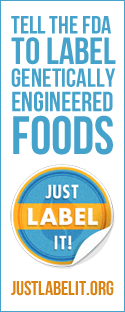|
We’ve all been there: staring at the “sell by” and “best before” labels on our food wondering if it’s gone bad or if it still has a few days left. But apparently a few people have complained about the confusion surrounding these dates, because the Food Marketing Institute (FMI) and Grocery Manufacturers Association (GMA) are finally doing something about it. So say sayonara to those misleading terms.
Also read, Canada’s New Food Labels Won’t Include GMO Information. The FMI and GMA announced back in February that they are launching a new initiative in order to reduce consumer confusion on product labels. The groups will be ditching 10 phrases, such as “sell by,” “use by,” “expires on,” "best before,” “better if used by” and “best by.” They will be replaced by just two simple phrases. “Best If Used By,” will describe product quality, meaning it’s safe to use or consume the product after the date, but it may not taste or perform as expected. Alternatively, “Use By” will refer to products that are highly perishable and develop food safety concerns over time — meaning they must be used by the package’s date and thrown out promptly after. Despite the fact it won’t be law, retailers and manufacturers are encouraged to immediately start phasing out misleading labeling, making the two new phrases an industry norm by the summer of 2018. While this move will likely result in fewer cases of food poisoning, the main objective is to prevent the unnecessary discarding of food. According to the Food and Agriculture Organization of the United Nations, roughly one third of the food produced in the world for human consumption every year — approximately 1.3 billion tons — gets lost or wasted. In America, one of the main reasons this happens is because people tend to throw away food because they think it has gone bad. According to the press release, about 44 percent of food waste in the United States sent to landfills comes from consumers. Thankfully, statistics show that addressing consumer confusion around product date labeling could reduce that number by 8 percent. “Our product code dating initiative is the latest example of how retailers and manufacturers are stepping up to help consumers and to reduce food waste,” Pamela G. Bailey, GMA’s president and CEO, said in a statement. “Eliminating confusion for consumers by using common product date wording is a win-win because it means more products will be used instead of thrown away in error,” said Jack Jeffers, vice president of quality at Dean Foods, which led GMA’s work on this issue. “It’s much better that these products stay in the kitchen — and out of landfills.” It will be at least a year before the new labeling system will be the norm. Until then, make sure to stay educated on food expiration dates. What Do YOU Think? Is the current food safety labeling system confusing? How much food do you throw away every week due to misleading labels? Do you think the new ones will reduce the overall amount of food waste? SOURCE Leah Groth, Live Strong
0 Comments
Leave a Reply. |
Advertisement
News & Updates
Stay informed with the latest news around foodservice, agriculture and other related food news. Advertisement Opportunities
|


 RSS Feed
RSS Feed


